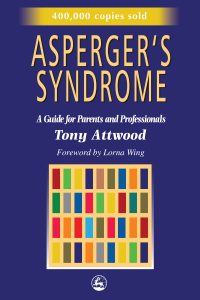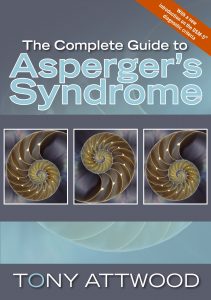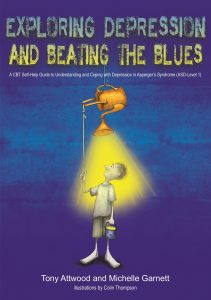To mark JKP’s 30th anniversary year Tony Attwood has written about JKP’s role in developing the world’s understanding of and approach to autism. In this article he also touches upon his own experiences as a clinical psychologist/author, and what he thinks will be the key areas of discovery in the future.

Autism is caused by an emotionally cold mother and is an expression of schizophrenia. That was the opinion of psychiatrists and psychologists from the 1950s to the early 1970s. Autism was perceived as a rare and profound disability with, autistic children frequently admitted to institutions for the remainder of their lives. This was the world of autism when I was a psychology student in the early 1970s. In my role as a volunteer at a special school in England, I met two aloof and non-verbal children with a diagnosis autism. I found their characteristics both entrancing and intriguing, and from that point, as a first-year student, I resolved to become a specialist in autism.
During the 1980s there was a paradigm shift in terms of the conceptualization of autism as a neuro-developmental disorder affecting the connections and functioning of specific areas of the brain, rather than a disorder caused by faulty parenting and an expression of psychosis. There was also the recognition of a much wider range of expression of autism, including Asperger’s syndrome. New and effective diagnostic assessment instruments and therapies to improve specific abilities were developed.
When Jessica Kingsley Publishers (JKP) was founded 30 years ago, there was a growing need for literature for parents, professionals and those who have autism. JKP became the right publisher at the right time, producing the seminal books on so many aspects of autism, particularly Asperger’s syndrome. In the latter part of the 1980s, the landscape of autism was changing rapidly: there were new insights from autobiographies; research into the social challenges faced by those who have autism; exploration of the language profile, and the development of education and therapy programmes for use at both school and home. The residential institutions were being closed, families were provided with support, and there was encouragement for children with autism to be integrated into their local schools.

During the 1990s there was an increasing need for literature on the circumstances, abilities and support needs for adults with autism, and particularly Asperger’s syndrome. There was also a proliferation of diagnostic instruments, research using neuroimaging and studies on the aetiology and genetics of autism. There was a recognition that autism could be associated with mood disorders, especially anxiety, and an acknowledged profile of social abilities and difficulties.

In the millennium years, JKP published increasingly diverse literature, addressing such issues as strategies to improve friendship and relationship skills, the sensory profile associated with autism, programmes for sexuality education, and the unique of abilities and experiences of girls and women who have Asperger’s syndrome. These years also saw the proliferation of children receiving a diagnosis of an Autism Spectrum Disorder (ASD), with the previous estimate of autism as occurring in one child in 2500 changing to one child in 88. While the increase could be attributed to a greater accuracy in diagnosing autism, and the inclusion of a wider range of expression of ASD, my thoughts are that there has been a genuine but modest increase in the prevalence of autism, though we have yet to explain why. The millennium years were also associated with a significant self-advocacy movement, and literature on both employment and college education. There was a move to explain the characteristics of ASD to children, which included a range of stories and novels with the central character having Asperger’s syndrome.
In 1998, my book Asperger’s Syndrome: A Guide for Parents and Professionals reviewed about 180 research studies and books on Asperger’s syndrome. By 2006, however, my Complete Guide to Asperger’s Syndrome reviewed over 500, research studies and publications, clear evidence of a huge increase in research and knowledge.

Since 2013, there has been a reduction in the rate of diagnosis of ASD due to both changed and stricter diagnostic criteria. The term ‘Asperger’s syndrome’ has been formally replaced with the term ‘Autism Spectrum Disorder Level 1 without intellectual and language impairment.’ I continue to use the term Asperger’s syndrome for simplicity and continuity. There has been a greater recognition of the need to identify girls who have Asperger’s syndrome, with a probable male: female ratio of 2:1. The girls are more creative and effective than the boys in camouflaging their social confusion by careful observation, analysis and imitation of social abilities. JKP have now published a range of books specifically for girls and women with Asperger’s syndrome. There has also been the development and evaluation of therapy programmes for mood disorders, such as my new self-help book Exploring Depression and Beating the Blues, written with my colleague Michelle Garnett. Research studies have explored the very early signs of autism in infants, characteristics associated with autism in parents and siblings, strategies to support inclusive education as well as home schooling, and issues associated with seeking and maintaining employment. There has also been research and literature on specific aspects of sexuality, such as the higher-than-expected level of gender dysphoria associated with ASD; and examination of the level of substance abuse, often due to self-medication in order to manage anxiety. Once again, JKP have been at the forefront in publishing literature that reflects and encourages our developing understanding of autism and strategies to develop specific abilities.
Having explored the landscape of autism for over 40 years, what do I believe are the likely areas of discovery in the future? We will need to know more about aging and autism. Do the characteristics change over time? How should we educate those involved in services for the aged about the needs of someone with autism? Another fascinating area is that of actually un-diagnosing ASD. My own clinical practice and longitudinal research indicates that perhaps around 15 per cent of those who receive a diagnosis of ASD in early childhood can and do achieve many of those abilities that parents and teachers thought would always be elusive. The characteristics of autism can eventually become sub-clinical for a growing proportion of adults who have ASD. It is interesting that the positive characteristics, such as a talent in mathematics or drawing do not diminish, but the social puzzle of life is finally solved and the person learns to live with, and adapt to, the more troublesome characteristics such as sensory sensitivity and anxiety. This newly recognized prognosis no doubt has many explanations: but one of these is surely greater knowledge, which has been the intention and value of Jessica Kingsley Publishers.
For more information on Tony Attwood’s books and all other JKP publications on autism CLICK HERE to join our mailing list. You will receive regular updates, special offers and our latest autism and related conditions catalogue for free
Thank you for the support you give, through your work, to those with autism and those who care so much about them.